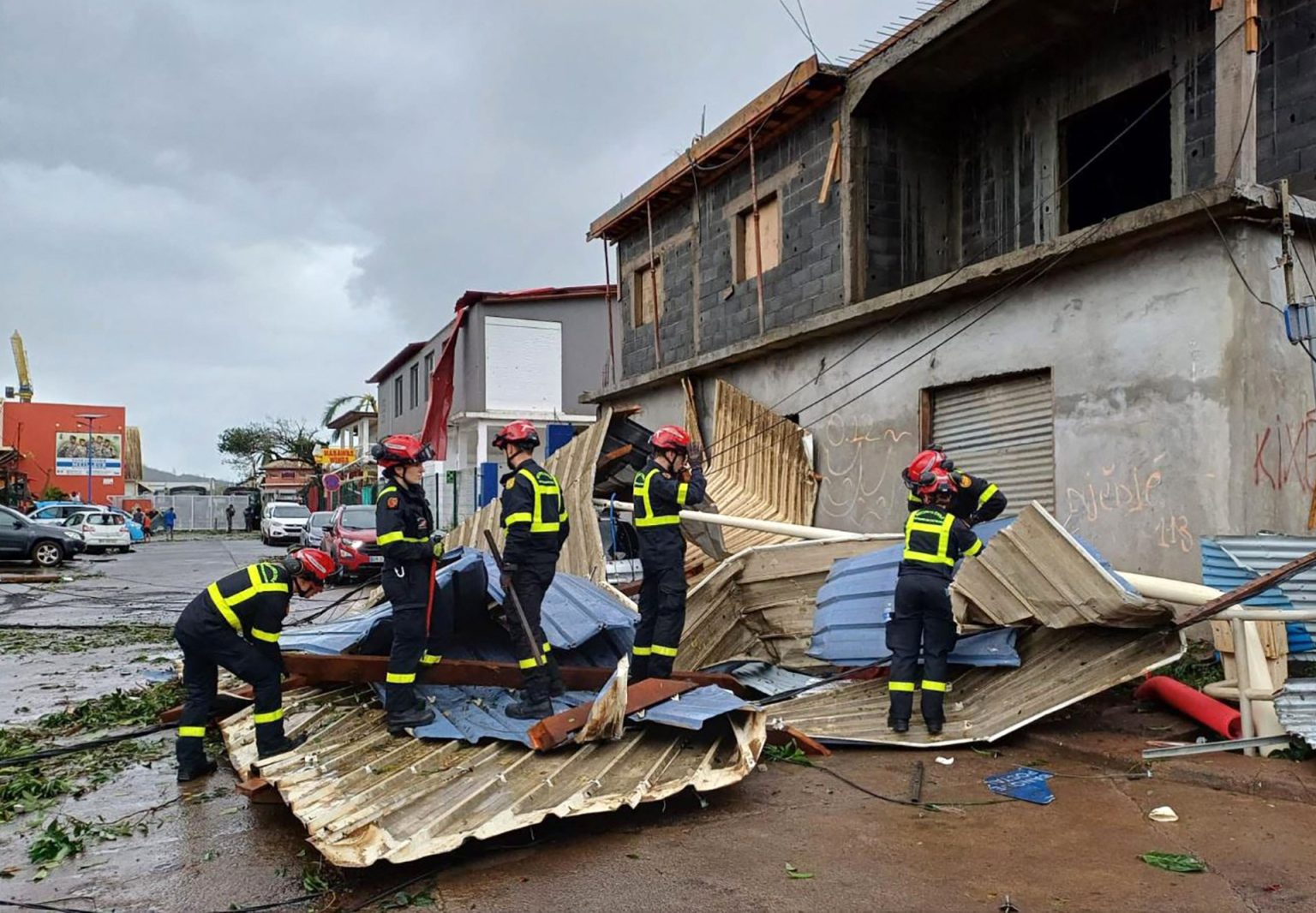Cyclone Chido, originating as a tropical depression in the southeastern Indian Ocean basin in early December 2024, rapidly intensified into a Category 4 equivalent cyclone, unleashing its devastating force upon the French overseas territory of Mayotte. This small archipelago, located off the east coast of Africa and home to approximately 320,000 people, experienced wind speeds exceeding 220 km/h (137 mph), marking the most severe storm to strike the island in nearly a century. The cyclone’s impact extended beyond Mayotte, affecting surrounding regions in southeastern Africa, including Madagascar, Mozambique, and the Comoros Islands, with heavy rainfall and structural damage reported. The initial death toll in Mozambique was estimated at three, with fears of a significantly higher number in Mayotte.
The catastrophic damage inflicted upon Mayotte by Cyclone Chido has left the island grappling with widespread destruction and a mounting death toll. While the official count stands at 19, estimates from local officials suggest a significantly higher number, potentially reaching into the hundreds or even thousands. The presence of a large undocumented migrant population, estimated at over 100,000, coupled with the swift burial customs practiced in this predominantly Muslim territory, has complicated efforts to accurately assess the loss of life. Rescue operations, bolstered by reinforcements from mainland France, continue to sift through the debris in search of survivors, while authorities acknowledge the daunting task of accounting for all victims amidst the devastation.
The impact of Cyclone Chido on Mayotte’s infrastructure has been nothing short of crippling. Essential services and facilities have been severely compromised, including roads, water treatment plants, and electrical transmission lines. Over 800 individuals have been reported injured, with dozens sustaining severe injuries. More than 100,000 people have sought refuge in approximately 70 emergency shelters, underscoring the widespread displacement caused by the storm. The health system, already fragile, has been further strained, with access to care significantly hampered. Damage to the control tower at Mayotte’s main airport has restricted air access to military aircraft, hindering rescue and relief efforts. Furthermore, a widespread internet outage lasting over 36 hours has further isolated the island and disrupted communication.
The cyclone’s impact has disproportionately affected impoverished communities, particularly those residing in shanty towns constructed with sheet metal, ill-equipped to withstand the ferocity of the storm. Many of the fatalities are believed to have occurred within these vulnerable communities. The destruction of infrastructure has left some areas without access to food and water since the cyclone’s initial impact. This highlights the pre-existing challenges faced by Mayotte, the poorest French overseas territory and arguably the poorest within the European Union, where the majority of the population lives below the poverty line and has long contended with water shortages, drought, and inadequate investment.
Following its onslaught on Mayotte, Cyclone Chido weakened as it tracked across the Mozambique Channel, making landfall in Mozambique as a tropical storm before continuing its westward trajectory. As of Monday, January 22, 2025, Chido had weakened to a remnant low, situated south of Balaka township in Malawi, with diminished wind speeds. Projections indicate the system will dissipate near Zimbabwe by Tuesday. This cyclone, however, serves as a stark reminder of the vulnerability of the region to such extreme weather events, following in the wake of other devastating cyclones like Idai in 2019 and the record-breaking Freddy in 2023, which collectively claimed thousands of lives and caused widespread destruction across East Africa and surrounding areas.
The increasing intensity and frequency of cyclones in the region are attributed to climate change and the warming of ocean waters. Scientific research indicates a rapid warming trend in the Indian Ocean, with temperatures in the area where Chido developed 1-2 degrees Celsius higher than usual. This warmer water fuels the strength of these storms, leading to more destructive outcomes. Experts emphasize the need for enhanced cyclone monitoring capabilities and increased funding for meteorological agencies to provide timely warnings to vulnerable populations. Furthermore, the importance of “disaster-proofing” coastal communities through improved infrastructure and preparedness measures is underscored to minimize the impact of future cyclones and protect lives and livelihoods in these vulnerable areas. The devastation wrought by Cyclone Chido serves as a compelling call to action for both improved preventative measures and enhanced disaster response capabilities in the face of a changing climate.

